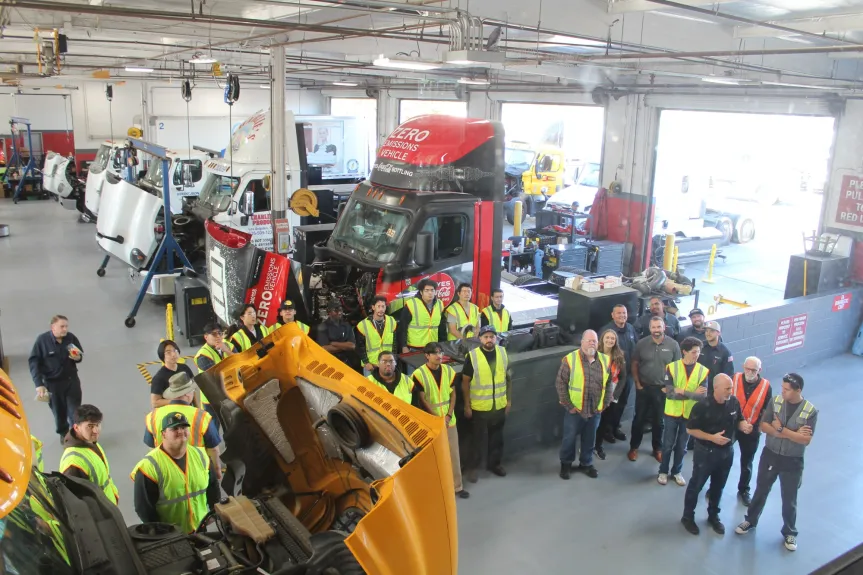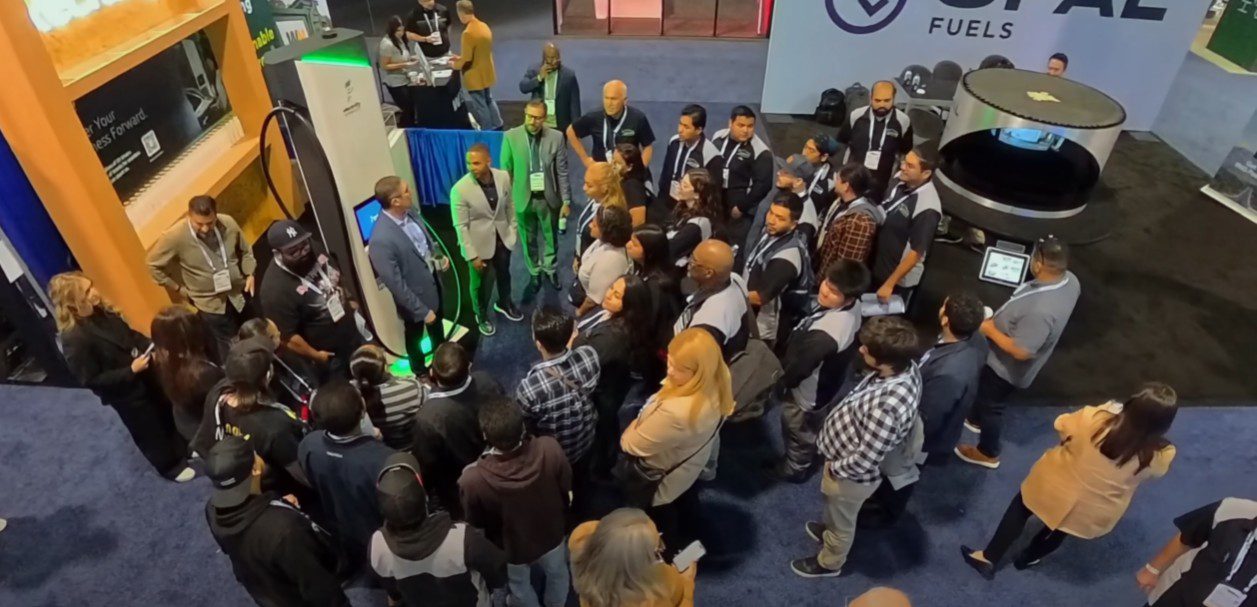
Vanessa Salazar grew up tagging along when her father went to work as a truck driver.
Now 35, Salazar has started her career in the trucking industry and this year decided she also wanted to learn more about how to fix semi-trucks, especially electric-powered trucks that are now being introduced into the industry.
“I want to learn how to fix them as well, and all the electrical components is very interesting to me and I love it and it’s something I want to learn and understand more and one day be able to do it,” she said.
Salazar is one of many students who are part of Rio Hondo College’s automotive technology program. This week, students in the program got an opportunity to study an electric semi-truck and talk to its technicians at the Velocity Truck Centers Whittier Facility.
Starting Jan. 1, 2024, California’s Advanced Clean Fleet Rule goes into effect, requiring any semi-trucks being added to the drayage registry at ports to be zero-emission.
With an increasing number of fleets in California transitioning to battery-electric trucks, Velocity and other area dealerships are adding positions in maintenance and repair to ensure a smooth operation of electric trucks and charging infrastructure and have partnered with schools such as Rio Hondo.


